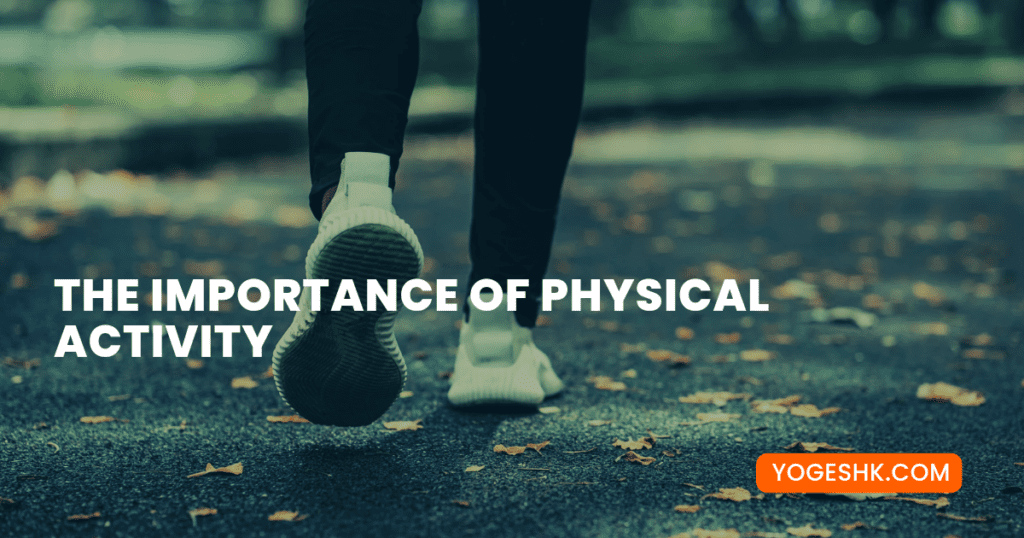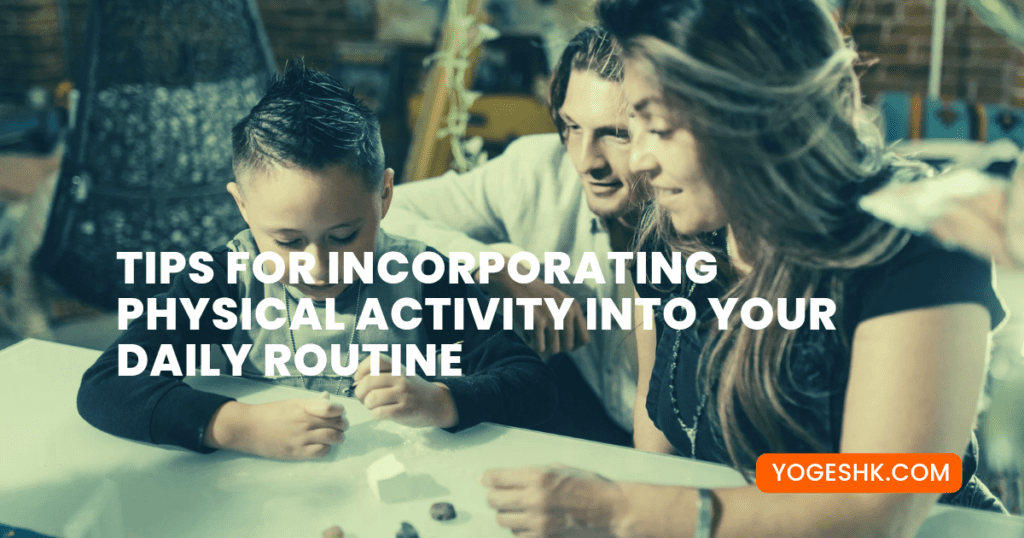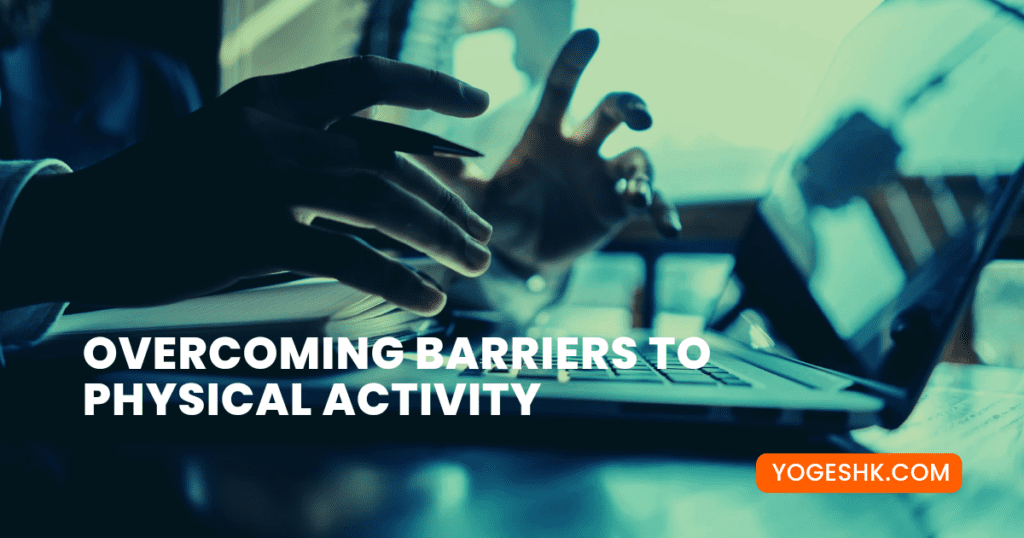
As humans, we all strive to lead a healthy and fulfilling life. A key aspect of achieving this is through physical activity. Engaging in regular physical activity is not only good for our physical health but also our mental well-being. However, with busy schedules and a sedentary lifestyle becoming the norm, it can be challenging to prioritize physical activity.
This article will discuss the importance of physical activity for a healthy lifestyle, different types of physical activity, benefits, and tips for incorporating it into your daily routine. We will also address common barriers and provide solutions to overcome them, helping you to make physical activity a regular part of your life. So, let’s get started on the journey toward a healthier you!
What is Physical Activity?
Physical activity is any bodily movement that requires energy expenditure. Physical activity can range from simple exercises like walking to more intense activities like weightlifting or running. Physical activity can occur in different settings, such as at home, school, work, or the community. In this section, we will look at the definition of physical activity, the different types, and the recommended amount of physical activity for adults and children.
Definition of Physical Activity
Physical activity is any movement produced by skeletal muscles that result in energy expenditure. Physical activities include working, playing, carrying out household chores, or engaging in recreational activities. The movement can be of varying intensity and duration, from low-intensity activities like walking to more vigorous activities like running or playing sports.
Different Types of Physical Activity
There are three main types of physical activity: aerobic, strength training, and flexibility.
- Aerobic activity: These activities increase your heart rate and breathing, like jogging, swimming, cycling, and dancing. They are great for improving cardiovascular health and endurance.
- Strength training: These activities are that involve the use of resistance, such as lifting weights, doing push-ups, or using resistance bands. They are great for building strength and muscle mass.
- Flexibility activities are suitable for stretching and lengthening your muscles, such as yoga, stretching, or Pilates. They are great for improving flexibility, balance, and posture.
Incorporating all three types of physical activity into your routine for optimal health benefits is essential.
Recommended Amount of Physical Activity for Adults and Children.
The recommended amount of physical activity varies depending on age, gender, and health status. For adults, the World Health Organization (WHO) recommends at least 150 minutes of moderate-intensity aerobic activity or at least 75 minutes of vigorous-intensity aerobic exercise per week, along with muscle-strengthening activities, at least two days per week.
For children and adolescents aged 5-17, the WHO recommends at least 60 minutes of moderate to vigorous-intensity daily physical activity, including activities that strengthen muscles and bones.
In summary, physical activity is any bodily movement that requires energy expenditure. Three main types of physical activity – aerobic, strength training, and flexibility – should be incorporated into your routine for optimal health benefits. The recommended amount of physical activity varies by age, gender, and health status, but everyone can benefit from making physical activity a regular part of their routine.
Benefits of Physical Activity
Regular physical activity offers numerous health benefits, both physical and mental. This section will explore some of the most significant benefits of physical activity.
- Improved Cardiovascular Health: Regular physical activity helps improve cardiovascular health by strengthening the heart and blood circulation. Aerobic exercises like jogging, cycling, and swimming are particularly beneficial for cardiovascular health.
- Increased Strength and Endurance: Strength training activities like lifting weights, push-ups, or resistance bands, help build muscle and increase strength and endurance. Strength training can also help prevent injuries and improve overall mobility.
- Reduced Risk of Chronic Diseases: Regular physical activity is associated with a lower risk of chronic diseases such as diabetes, heart disease, and certain cancers. Physical activity helps regulate blood sugar levels, reduce inflammation, and improve immune function.
- Improved Mental Health and Well-being: Physical activity is good for physical health and has numerous mental health benefits. Regular physical activity can help reduce symptoms of anxiety and depression, improve mood, and enhance cognitive function.
- Better Sleep Quality: The study has shown that physical activity improves sleep quality and duration, helping individuals feel more rested and energized during the day.
- Increased Energy Levels: Contrary to popular belief, regular physical activity increases energy levels rather than decreasing them. Physical activity boosts endorphin levels, leading to happiness and increased energy levels.
In summary, physical activity offers numerous physical and mental health benefits, including improved cardiovascular health, increased strength and endurance, reduced risk of chronic diseases, improved mental health and well-being, better sleep quality, and increased energy levels. Incorporating physical activity into your daily routine can be a powerful tool for improving overall health and well-being.
7 Tips to sleep better and faster in 2023 yogeshk.com
Tips for Incorporating Physical Activity into Your Daily Routine

Incorporating physical activity into your daily routine can be manageable and manageable. Here are some tips to help make physical activity a part of your everyday life:
- Start with Small Changes: You don’t have to go from being sedentary to running a marathon overnight. Start with small changes like taking the stairs instead of the elevator, walking to work instead of driving, or going for a short walk during your lunch break.
- Find Activities that You Enjoy: Engaging in physical activity doesn’t have to mean going to the gym or running on a treadmill. Find activities you enjoy, such as dancing, swimming, hiking, or cycling. Engaging in physical activity will make it easier to stick to and enjoy.
- Make it a Social Activity: Join a sports team, take a fitness class with friends, or walk with a colleague during your lunch break. Making physical activity a social activity can make it more enjoyable and help you stay accountable.
- Schedule it into Your Day: Schedule physical activity in your day, just like any other appointment. Scheduling can help ensure that you make time for physical activity and make it a part of your daily routine.
- Mix it Up: Trying different types of physical activity can help you avoid boredom and keep things interesting. Mix up your routine by trying new activities or challenging yourself with new goals.
Incorporating physical activity into your daily routine is essential for a healthy lifestyle, starting with minor changes. Like finding activities you enjoy, making them a social activity, scheduling them into your day, and mixing it up. By doing this, you can make physical activity a part of your daily routine and reap its many health benefits.
Overcoming Barriers to Physical Activity

While physical activity is essential for a healthy lifestyle, many people face barriers that can make incorporating physical activity into their daily routines challenging. Here are some common barriers to physical activity and tips for overcoming them:
- Lack of Time: One of the most common barriers to physical activity is a need for more time. Many people lead busy lives, finding time for physical activity challenging. Consider breaking up your physical activity into smaller chunks throughout the day to overcome this barrier. For example, take a brisk walk during your lunch break or a few laps around the office building between tasks.
- Lack of Motivation: Another common barrier to physical activity is a need for more motivation. Finding the motivation to exercise can be challenging, especially if you are starting. To overcome this barrier, set achievable goals and track your progress. Consider finding a workout buddy to help keep you accountable and motivated.
- Lack of Access: Some people may need access to resources such as gyms or parks for physical activity. To overcome this barrier, look for creative ways to engage in physical activity that doesn’t require many resources. For example, you can exercise bodyweight at home, walk in your neighborhood, or find free workout videos online.
- Health Concerns: Some people may face barriers to physical activity due to health concerns or physical limitations. To overcome this barrier, consult your healthcare provider to find safe and appropriate physical activity options for your specific needs.
- Weather Conditions: Weather conditions can also hinder physical activity, especially during extreme or inclement weather. To overcome this barrier, consider indoor physical activity options such as using an indoor gym or workout video.
By identifying and overcoming barriers to physical activity, you can make it easier to incorporate physical activity into your daily routine and improve your overall health and well-being.
Conclusion: Making Physical Activity a Priority in Your Life
In conclusion, physical activity is essential for a healthy lifestyle. Regular physical activity offers numerous benefits, including improved cardiovascular health, increased strength and endurance, reduced risk of chronic diseases, improved mental health and well-being, better sleep quality, and increased energy levels.
Despite the numerous benefits of physical activity, many people face barriers that can make incorporating physical activity into their daily routines challenging. However, by identifying and overcoming these barriers, you can make physical activity a part of your daily routine and enjoy the benefits of a healthier lifestyle.
You are making physical activity a priority can be manageable and manageable. By starting with minor changes, finding activities you enjoy, making them a social activity, scheduling them into your day, and mixing it up, you can make physical activity a habit and improve your overall health and well-being.
Incorporating physical activity into your daily routine may take time and effort, but the benefits are worth it. By making physical activity a priority in your life, you can improve your quality of life, increase your lifespan, and enjoy a happier, healthier life. So, start small and make physical activity a part of your daily routine today!
